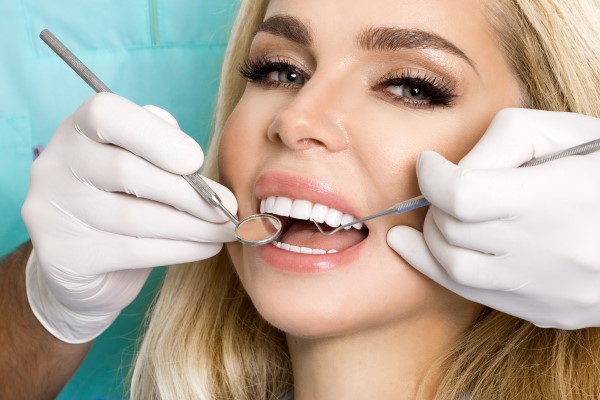Introduction
Jaw alignment in cosmetic dentistry plays a crucial role in both oral health and the aesthetics of your smile. In cosmetic dentistry, correcting jaw alignment issues can significantly improve the overall appearance of your teeth and face. This article explores the importance of jaw alignment in cosmetic dentistry, the benefits of correcting misalignment, common issues associated with jaw misalignment, diagnostic tools used to assess alignment, treatment options available, recovery and aftercare procedures, and tips for maintaining jaw alignment for long-term oral health.
Understanding Jaw Alignment in Cosmetic Dentistry
Jaw alignment, also known as occlusion, refers to the way your upper and lower teeth fit together when you close your mouth. In a healthy bite, the upper teeth slightly overlap the lower teeth, and the molars fit together like puzzle pieces. However, issues such as underbite, overbite, crossbite, or open bite can occur when the teeth do not align correctly. These misalignments can lead to various problems, including difficulty chewing, speech issues, jaw pain, and an unbalanced facial appearance.
Benefits of Correcting Jaw Alignment
Correcting jaw alignment can have a significant impact on your oral health and overall well-being. By aligning the teeth properly, you can improve your bite function, reduce the risk of tooth wear and breakage, alleviate jaw pain and discomfort, and enhance the aesthetics of your smile. Additionally, correcting jaw alignment can improve your facial symmetry, leading to a more balanced and harmonious appearance.
Common Issues with Jaw Misalignment
Jaw misalignment can manifest in several ways, including:
- Underbite: Lower teeth protrude beyond the upper teeth.
- Overbite: Upper teeth excessively overlap the lower teeth.
- Crossbite: Upper and lower teeth are misaligned horizontally.
- Open bite: Some teeth do not make contact when biting down.
These issues can lead to problems such as uneven tooth wear, difficulty chewing, jaw pain, and self-consciousness about your smile.
Check Cosmetic Dentistry opportunities in Aurora
Diagnostic Tools for Assessing Jaw Alignment
To assess jaw alignment, a cosmetic dentist may use various diagnostic tools, such as:
- Dental X-rays: To evaluate the position of the teeth and jawbone.
- Impressions: To create models of the teeth for a closer examination.
- Computerized Tomography (CT) scan: To provide detailed images of the teeth and jawbone.
These tools help dentists determine the extent of the misalignment and develop an appropriate treatment plan.

Treatment Options for Correcting Jaw Alignment
Several treatment options are available to correct jaw alignment issues, including:
- Orthodontic treatment: Braces or clear aligners can gradually move the teeth into proper alignment.
- Jaw surgery: In severe cases, surgical intervention may be necessary to reposition the jawbone.
- Dental restorations: Crowns, veneers, or dental bonding can improve the appearance of misaligned teeth.
Your cosmetic dentist will recommend the most suitable treatment based on your specific needs and the severity of your misalignment.
Recovery and Aftercare Following Jaw Alignment Procedures
The recovery process following jaw alignment procedures varies depending on the treatment. For orthodontic treatment, you may experience some discomfort and tightness as your teeth adjust to their new positions. Jaw surgery may require a longer recovery time, during which you may need to follow a soft diet and practice good oral hygiene to prevent infection.
Also Read: The Secret of Perfect Oral Health with a Teeth Chart in Canada
Maintaining Jaw Alignment: Tips for Long-Term Oral Health
To maintain the results of jaw alignment treatment and promote long-term oral health, consider the following tips:
- Wear retainers as prescribed by your dentist to prevent teeth from shifting back.
- Practice good oral hygiene, including brushing and flossing regularly.
- Avoid habits that can damage your teeth, such as nail biting or chewing on hard objects.
- Visit your dentist regularly for check-ups and cleanings.

Conclusion
Achieving proper jaw alignment is essential for both oral health and the aesthetics of your smile. By understanding the importance of jaw alignment in cosmetic dentistry, you can make informed decisions about your dental care and enjoy a healthy, beautiful smile for years to come.
If you want to book an appointment in Aurora, Click Here!
FAQs:
1.Is jaw misalignment a common issue?
Yes, jaw misalignment is relatively common and can affect people of all ages. It is essential to seek treatment from a qualified dentist or orthodontist to address any alignment issues.
2. How long does it take to correct jaw misalignment?
The duration of treatment depends on the severity of the misalignment and the chosen treatment option. Orthodontic treatment can take several months to a few years, while jaw surgery may require a more extended recovery period.
3. Can jaw misalignment affect my overall health?
Yes, jaw misalignment can impact your overall health, as it can lead to issues such as headaches, neck pain, and temporomandibular joint (TMJ) disorders. Seeking treatment for jaw misalignment can help alleviate these symptoms and improve your quality of life.




